Every year people flock for the annual spectacle of leatherback turtle watching in Grenada.
The leatherback turtle is enormous compared to all other species of marine reptiles. This colossal sea reptile may grow as long as 6 feet and as heavy as 2,000 pounds, leaving onlookers in awe at its size and presence.
Leatherback turtles may cover up to 10,000 miles yearly as they travel across the world’s seas in search of food and breeding mates, and to lay their eggs. Stunningly beautiful leatherbacks don’t have plates on their shells, making them unique.
Empirical evidence supports the idea that marine turtles return to the beach where they were born to lay their eggs. While many scientists have suggested that the turtles utilise the stars and ocean currents to direct them to their nesting grounds, the exact technique by which these species travel to their nesting grounds is still unclear.
When Can You Go Leatherback Turtle Watching in Grenada?
Turtles typically visit Grenada between March and June to lay eggs. Egg hatching takes place during June to July. Those who come for leatherback turtle watching in Grenada typically come for a week or two and stay at the Petite Anse Hotel as we are the nearest hotel. You can find out more about our hotel here.
Levera Beach, one of Grenada’s most important leatherback turtle nesting beaches, and just 15 minutes from our Sauteurs location.
Leatherback turtle watching in Grenada during breeding season is strictly forbidden without special authorisation. We’ll handle the paperwork and set you up a guided tour with professionals. Throughout your time, your guides will teach you all they know about leatherback turtles and tell you stories about their interactions with the creatures in the past.
Ocean Spirits in Grenada
Ocean Spirits is a non-profit organisation in Grenada who monitor, protect and educate about leatherback turtles. Find out more on the Ocean Spirits website.
Researchers from Ocean Spirits keep tabs on the turtles each year to see which ones have made the journey back to their birthplace. The turtle keepers keep track of each visit and plan to microchip the turtles so they can quickly identify each one and learn about their whereabouts and activities since they were last seen. They also provide guidance to those who are leatherback turtle watching in Grenada.
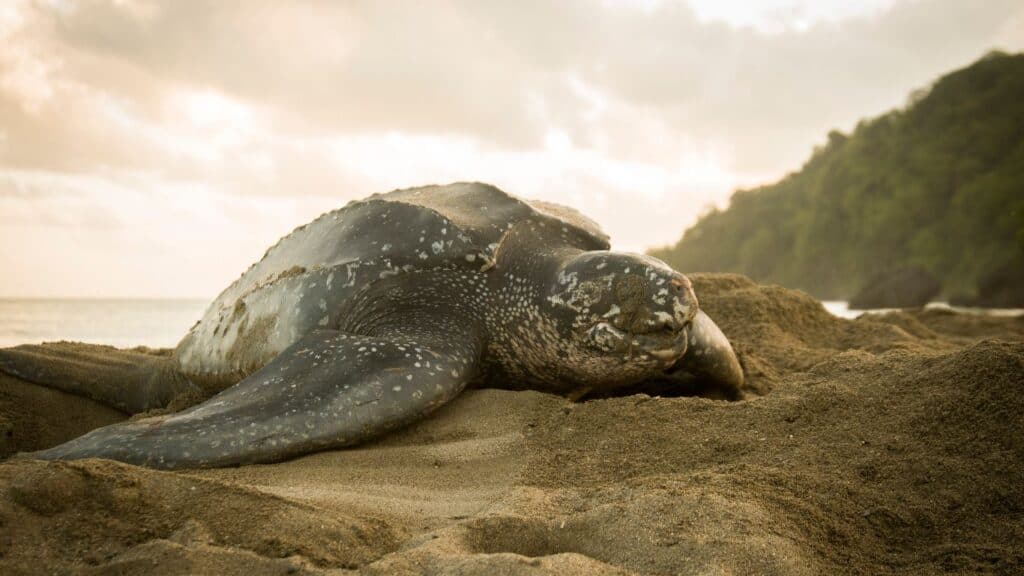
The Leatherback Turtle Watching Egg Laying Experience
The gender of a turtle is determined not at conception, but by the temperature of the sand in which the egg is deposited. As a result, many female turtles hatch from eggs in the centre of the nest, where the sand is often the hottest. It is common practise for leatherback turtles to save laying their infertile eggs until last so they may shield the rest of the clutch.
After laying up to 120 eggs, the turtles will cover the nest with sand and wait for the eggs to hatch. The eggs will start to hatch after around 50-70 days. After the eggs hatch, hundreds of tiny turtle hatchlings, measuring only 4-6 inches at most, will make their way down the beach in search of the water. These newborn turtles are adorable little copies of their enormous and fascinating parents.
The typical number of times a season that leatherback mothers will return to deposit eggs is three to six. The mother may not return for another two to three years if she does not mate that season.
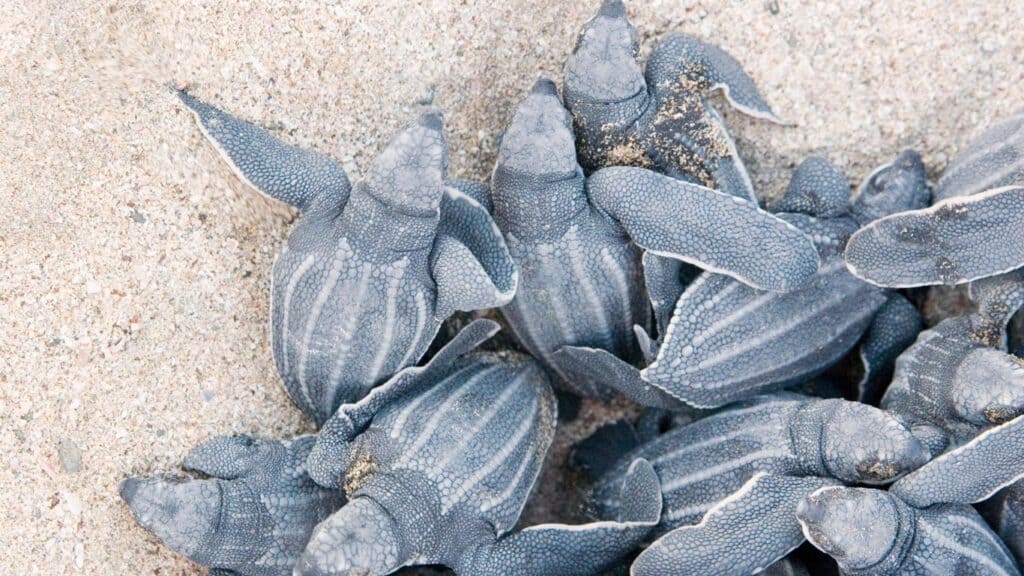
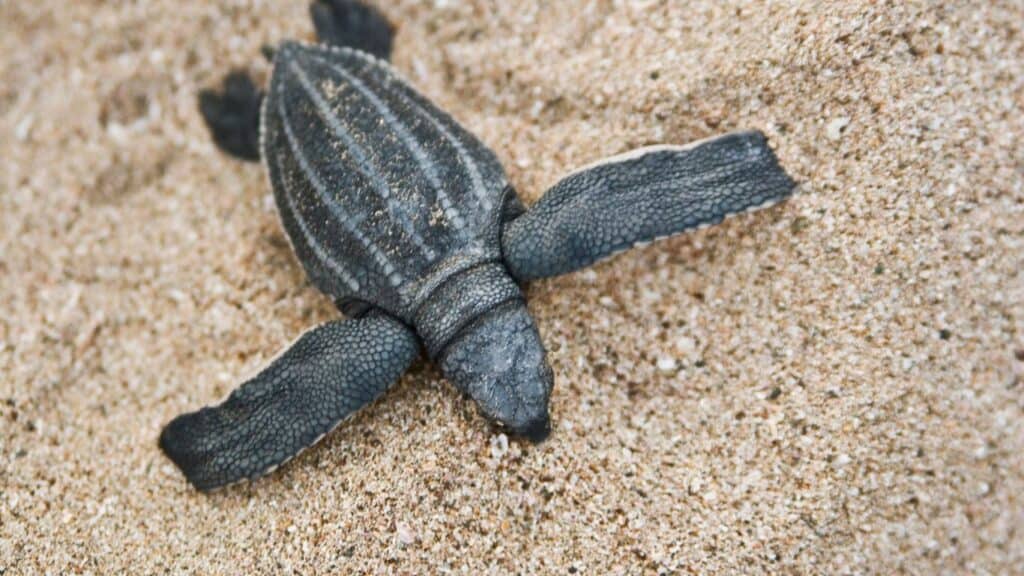
Other Caribbean Turtles to Watch For
Four distinct Caribbean sea turtles make Grenada their nesting ground during the year. The other three are green turtles, loggerheads, and hawksbills. Read more about endangered species of Grenada.
What to expect on a leatherback turtle-watching session
Ocean Spirits is a nonprofit organisation for the sake of the sea turtles that come to Grenada. For the benefit of sea turtles and the people of Grenada, they conduct scientific studies and distribute educational materials around the country. Ocean Spirits invites you to their website, where you may learn more about them. If you are interested in learning more about turtle watching during your time in Grenada, please don’t hesitate to get in touch with us here at the Petite Anse Hotel.
About midnight, some 40 sightseers turn up at the appointed meeting spot for the turtle viewing trip, dispersing into smaller groups of 6 or 8 persons. Sometimes there’s a wait for an hour or so before the turtles are ready to arrive and get started.
Each small party is guided by a certified naturalist/turtle expert equipped with a low beam flashlight.
It is always an incredible evening! The moon and the stars were the only sources of light accessible at night during the nesting season since all artificial lights are turned off so as not to frighten away the females who are depositing their eggs.
When the massive turtle is ready, she will place her eggs in a large hole she excavated. After laying, she will use her flippers to cover the eggs with sand to protect them from the environment and predators.
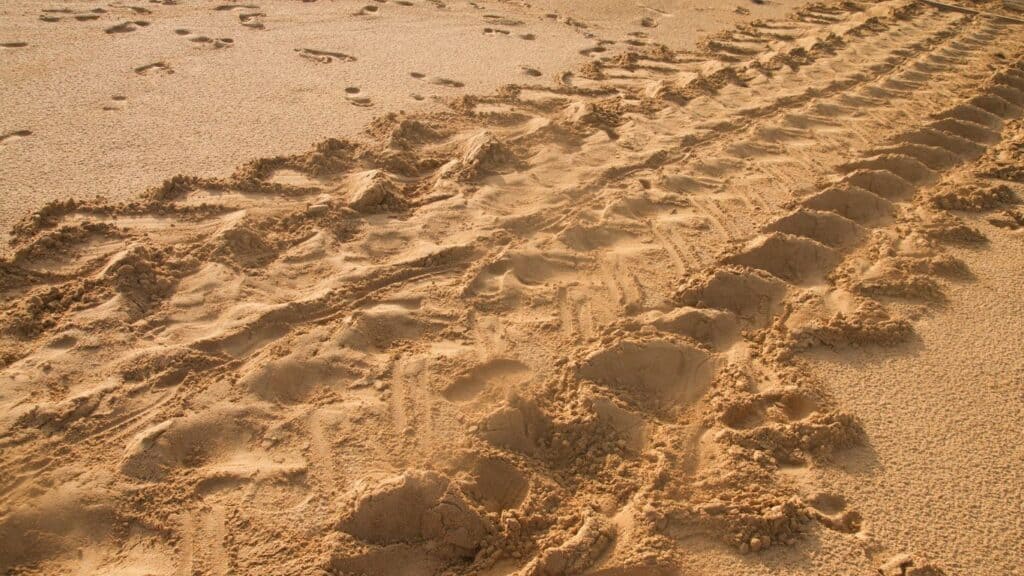
What happens next?
Specto and Ocean Spirits’ turtle keepers will let the hatchlings make their way to the water since the reptiles will need to learn the location of the nesting beach when they’re adults. One in every thousand hatchlings survives to maturity and returns to the nesting beach to deposit their eggs.
Planning a Visit Watch Leatherback Turtles
Please contact us if you’re interested in scheduling a once-in-a-lifetime visit with the leatherback turtles or if you’d just want to learn more. The cost of the turtle excursion is currently US$30 but may increase in 2023.
 English
English 
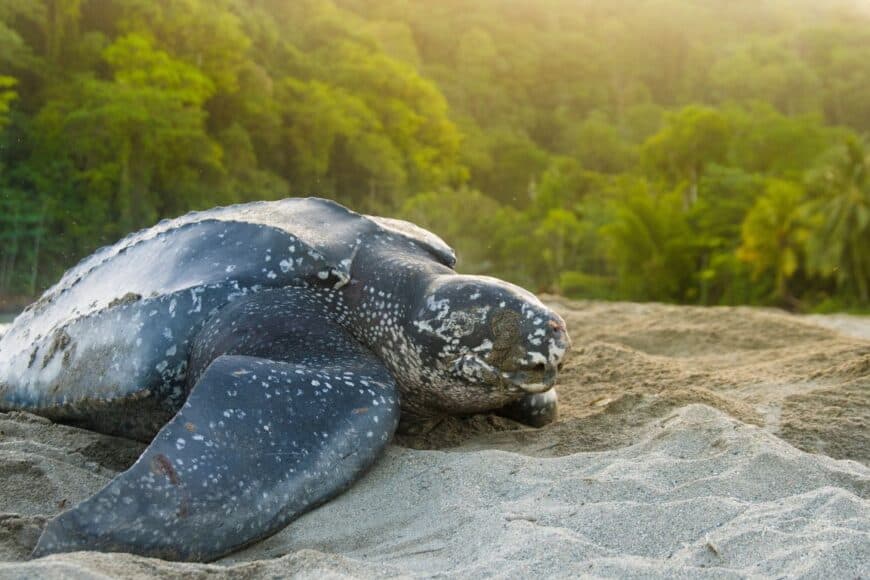

Recent Comments